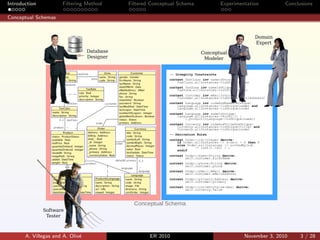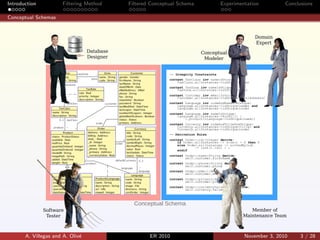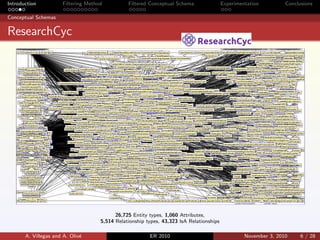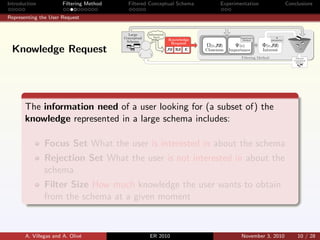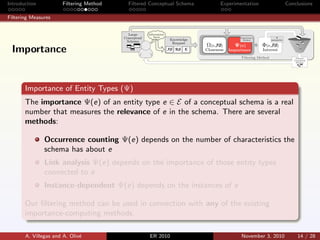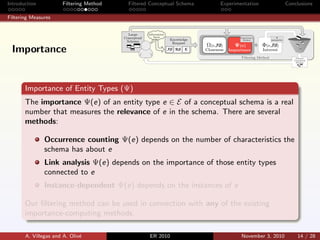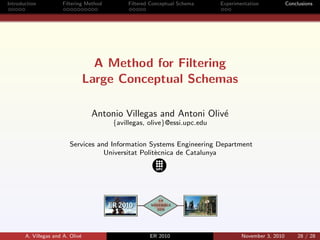This document describes a method for filtering large conceptual schemas to extract a reduced subset of relevant information for a user. The filtering method considers both the importance of entity types within the full schema and their closeness to the user-specified focus set. It represents the user's information need as a focus set, rejection set, and desired filter size. The interest score for each candidate entity type combines its importance and closeness, allowing extraction of a filtered conceptual schema tailored to the user's knowledge request.






